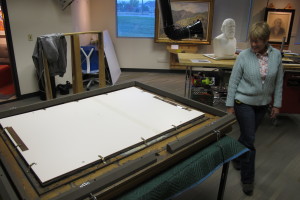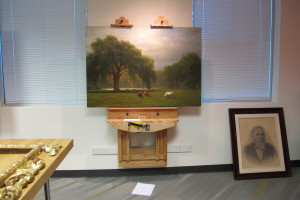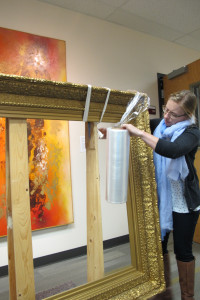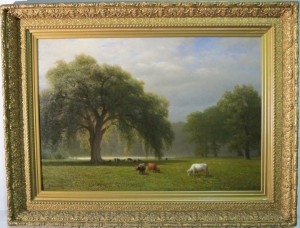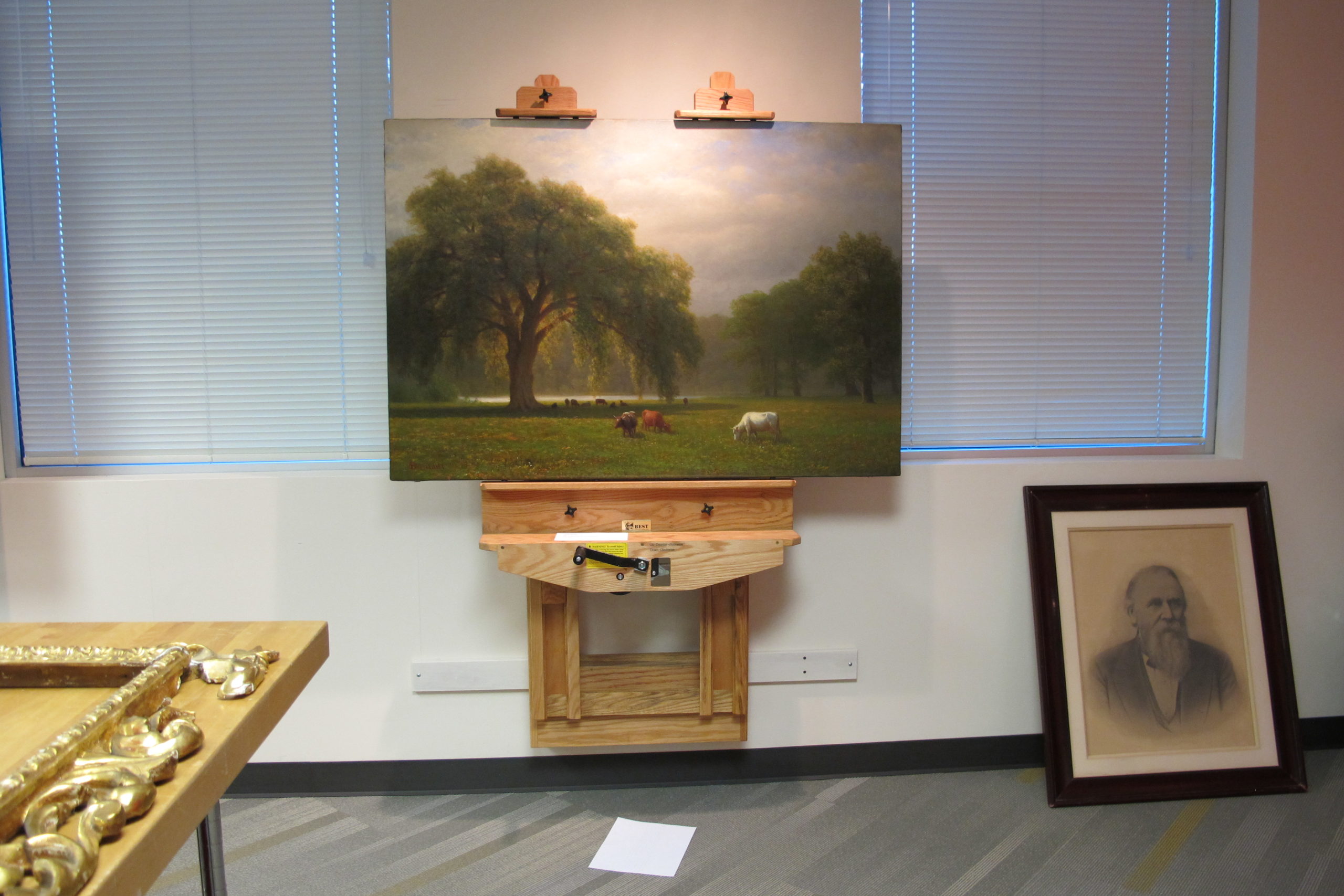Three grazing cows amble across the foreground of a verdant green landscape; a cluster of their bovine companions gather under the shade of a massive oak nearby. The sky is a serene blue-grey, and the whole scene is washed in a dusty golden hue. Albert Bierstadt’s painting, “Weeping Oaks, Clear Creek, California” (ca. 1881) is one of the University Art Collection’s oldest and most valued acquisitions. It’s easy to see the artist’s mastery of form and light in this lovely landscape. Unfortunately, the piece was not shown to best advantage in its original frame, which had been poorly “restored” and mishandled over the years. Last week, a team of restorers and Gallery staff assembled at the Hampden Art Study Center to remove the long-suffering frame, and prepare it for a much-needed professional restoration.
So just who was Albert Bierstadt? His name is a familiar one in the art of the American West (though the painter was German-born and trained). Bierstadt (1830-1902) began his practice is New York City, and first traveled west in 1859 – the first of many expeditions. He is particularly known for his somewhat idealized paintings of the Rocky Mountains. Many East Coast viewers at the time had never seen such wild, epic landscapes and soon, Bierstadt’s fame and fortune soared. The artist left his mark in Colorado. Mount Bierstadt was named after the painter and, prior to its current designation, Mount Evans was named after Bierstadt’s wife Rosalie. The artist left an enduring impression across the landscape of Colorado and the American West.
“Weeping Oaks” was restored twelve years ago, but its ornate and gilded frame was left to slowly weaken. The gold gilt was flaking, the plaster falling off in chunks, and the wood decomposing. The painting had fallen at one point, racking its frame out of square. The cracks that formed were clumsily filled with Spackling putty. Clearly, there was work to be done! Thankfully Joan Loughridge at Dry Creek Gold Leaf was willing to lend her skills to the job, and off the frame went. After its careful unframing at the Hampden Center, the canvas was carefully stored. The frame has now been stripped of three layers of improper paint. The next step is to square it up. Finally, conservators will match the final gilt finish to that of other Bierstadt paintings, at an estimated additional cost of $5 – 6,000. This is an ongoing project, and one that must be undertaken with careful research and historical sensitivity.
We had hoped to have our Bierstadt fully restored by the opening of the Gallery’s next show: “A Decade of Gifts and Discoveries.” This is a prolonged and meticulous process though, so it will likely not be ready in time for the January 9th event. Perhaps it will be revealed in a special unveiling towards the end of the show…we’ll keep you posted!
